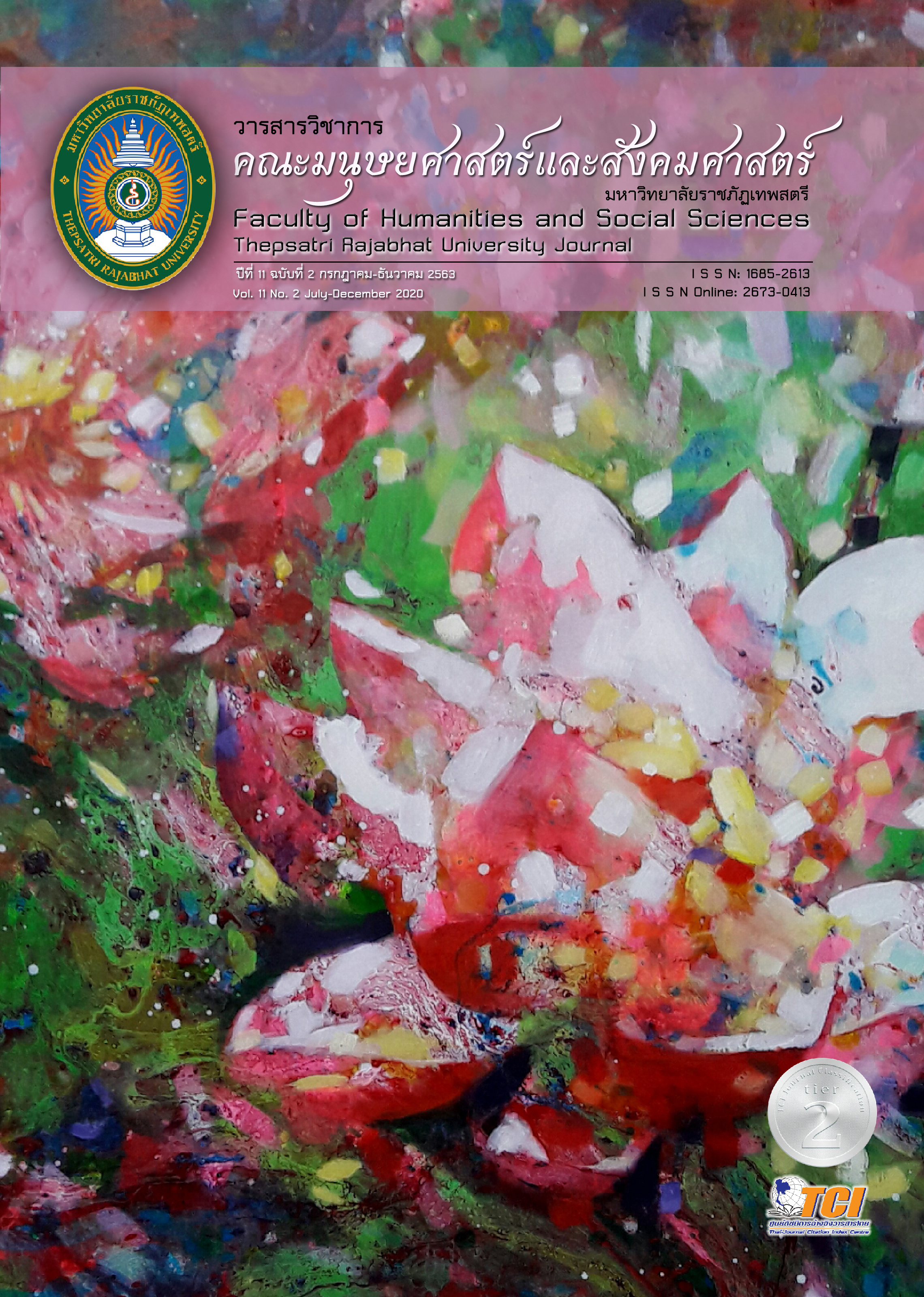การรับรู้และการตอบสนองบทบาทขององค์กรปกครองส่วนท้องถิ่นในจังหวัดชายแดนใต้ต่อการควบคุมยาสูบแบบบูรณาการมิติกฎหมายและมิติสังคมในระดับพื้นที่: กรณีศึกษา องค์กรปกครองส่วนท้องถิ่นในพื้นที่อำเภอรามัน จังหวัดยะลา การรับรู้และการตอบสนองบทบาทขององค์กรปกครองส่วนท้องถิ่นในจังหวัดชายแดนใต้ต่อการควบคุมยาสูบแบบบูรณาการมิติกฎหมายและมิติสังคมในระดับพื้นที่: กรณีศึกษา องค์กรปกครองส่วนท้องถิ่นในพื้นที่อำเภอรามัน จังหวัดยะลา
Main Article Content
บทคัดย่อ
การวิจัยนี้ศึกษาการรับรู้และทัศนคติขององค์กรปกครองส่วนท้องถิ่น การรับรู้ศักยภาพการปฏิบัติงานและปัญหาอุปสรรคของกลไกกลุ่มผู้มีส่วนเกี่ยวข้อง บทบาทขององค์กรปกครองส่วนท้องถิ่นต่อการขับเคลื่อนการควบคุมยาสูบแบบบูรณาการ รวมทั้ง การพัฒนากระบวนการสร้างเครือข่ายความร่วมมือกับกลุ่มผู้มีส่วนเกี่ยวข้องในการขับเคลื่อนการควบคุมยาสูบระดับพื้นที่ในมิติกฎหมายและมิติสังคม ใช้วิธีวิจัย เชิงปริมาณเป็นหลัก ใช้กลุ่มตัวอย่าง 2 กลุ่ม รวม 237 คน เครื่องมือที่ใช้เป็นแบบสอบถาม 2 ชุด คุณภาพแบบสอบถามมีค่าความเชื่อมั่นที่ใช้สถิติสัมประสิทธิ์แอลฟา มีค่า .90 และ .87 วิธีวิจัยเชิงคุณภาพใช้การสนทนากลุ่มและการประชุมปฏิบัติการ สถิติที่ใช้วิเคราะห์ข้อมูล คือ ค่าร้อยละ ค่าความถี่ ค่าเฉลี่ยและ ค่าส่วนเบี่ยงเบนมาตรฐาน ส่วนข้อมูลเชิงคุณภาพใช้การวิเคราะห์เชิงตรรกะ
ผลการวิจัยพบว่า การรับรู้และทัศนคติขององค์กรปกครองส่วนท้องถิ่น ความรู้ความเข้าใจในนโยบาย พระราชบัญญัติเกี่ยวกับยาสูบ และทัศนคติองค์กรปกครองส่วนท้องถิ่นต่อการขับเคลื่อนการควบคุมยาสูบ การรับรู้สถานการณ์ปัญหาการขับเคลื่อนและผลกระทบด้านยาสูบขององค์กรปกครองส่วนท้องถิ่น การรับรู้ศักยภาพการปฏิบัติงานและปัญหาอุปสรรคของกลไกกลุ่มผู้มีส่วนเกี่ยวข้อง และบทบาทองค์กรปกครองส่วนท้องถิ่น ในการตอบสนองการควบคุมยาสูบจากทัศนะ 2 กลุ่ม โดยภาพรวมอยู่ระดับปานกลาง ส่วนการพัฒนากระบวนการสร้างเครือข่ายความร่วมมือแตกต่างกันตามสภาพการณ์ มีลักษณะดำเนินการหลายระดับ มีกิจกรรมการขับเคลื่อนนโยบายสาธารณะเพื่อสุขภาพ สร้างสรรค์สิ่งแวดล้อมที่เอื้อต่อสุขภาพ เสริมสร้างการดำเนินการในชุมชนที่เข้มแข็งและปรับเปลี่ยนระบบบริการสุขภาพ ทั้งนี้ แนวทางการสร้างความร่วมมือพบว่ามีปัจจัยเฉพาะตามกระบวนการของห่วงโซ่อุปทาน สถานการณ์ปัญหายาสูบพบในแหล่งที่คนมาพบปะวาระต่างๆ รูปแบบกิจกรรมการควบคุมยาสูบมีหลากหลาย การวางแผนกิจกรรมนำร่องเน้นชุมชนและสร้างสรรค์สิ่งแวดล้อม
Downloads
Article Details
เนื้อหาและข้อมูลในบทความที่ตีพิมพ์ในวารสารวิชาการคณะมนุษยศาสตร์และสังคมศาสตร์ มหาวิทยาลัยราชภัฏเทพสตรี ถือเป็นข้อคิดเห็นและความรับผิดชอบของผู้เขียนบทความโดยตรง ซึ่งกองบรรณาธิการวารสารไม่จำเป็นต้องเห็นด้วย หรือร่วมรับผิดชอบใดๆ
บทความ ข้อมูล เนื้อหา รูปภาพ ที่ได้รับการตีพิมพ์ในวารสารวิชาการคณะมนุษยศาสตร์และสังคมศาสตร์ มหาวิทยาลัยราชภัฏเทพสตรี ถือเป็นลิขสิทธิ์ของวารสารวิชาการคณะมนุษยศาสตร์และสังคมศาสตร์ มหาวิทยาลัยราชภัฏเทพสตรี หากบุคคลหรือหน่วยงานใดต้องการนำทั้งหมดหรือส่วนหนึ่งส่วนใดไปเผยแพร่ต่าหรือกระทำการใดๆ จะต้องได้รับอนาญาตจากวารสารวิชาการ ฯ ก่อนเท่านั้น
เอกสารอ้างอิง
เกรียงไกร พัฒนกุลโกเมธ. (2554). ทัศนคติและความพึงพอใจของประชาชนในเขตกรุงเทพมหานครที่มีต่อสื่อรณรงค์เพื่อการงดสูบบุหรี่ที่ใช้กลยุทธ์การรณรงค์ด้วยความกลัว. ในรายงานสืบเนื่องจากการประชุมทางวิชาการและนำเสนอผลงานวิจัย “มสธ.วิจัย ประจำปี 2554”, 380-391. นนทบุรี: มหาวิทยาลัยสุโขทัยธรรมาธิราช.
จำนง แก้วนาวี, สุรินธร กลัมพากร, กิตติกร นิลมานัต และปรีชา กาฬแก้ว. (2557). การพัฒนารูปแบบชุมชนปลอดบุหรี่ อำเภอโคกโพธิ์ จังหวัดปัตตานี: การวิจัยเชิงปฏิบัติการแบบมีส่วนร่วม. วารสารพยาบาล, 63(1), 6-14.
เจ๊ะเหล๊าะ แขกพงศ์, รอฮีม นิยมเดชา, อับดุลรอยะ บินเซ็ง และอานิศ พัฒนปรีชาวงศ์. (2555). แนวทางการนำหลักศาสนบัญญัติอิสลามในการควบคุมการบริโภคยาสูบและคุ้มครองสุขภาพของผู้ไม่สูบสูบบุหรี่ ในชุมชนมุสลิม อำเภอเมือง จังหวัดนราธิวาส. วารสารมหาวิทยาลัยนราธิวาสราชนครินทร์, 4(2), 59-72.
ซอฟูวัณ จารง. (2559). ศึกษาพฤติกรรมการสูบบุหรี่ของชาวไทยมุสลิมในอำเภอยะรัง จังหวัดปัตตานี. วิทยานิพนธ์ปริญญาศิลปศาสตรมหาบัณฑิต มหาวิทยาลัยสงขลานครินทร์.
ปรีชา อุปโยคิน. (2557). รูปแบบการควบคุมทางสังคมเพื่อการเลิกสูบบุหรี่: การบูรณาการความร่วมมือระหว่างเครือข่ายชุมชนกับระบบการบริการสุขภาพของรัฐระดับชุมชน. MFU CONNEXION: Journal of Humanities and Social Sciences, 3(2), 46-68.
ฟ้ารุ่ง มีอุดร และสยาม บัวระภา. (2555). รายงานการประเมินสถานการณ์ยาสูบเพื่อการเปลี่ยนแปลงจังหวัดขอนแก่น. ขอนแก่น: ศูนย์วิจัยและจัดการความรู้เพื่อการควบคุมยาสูบ (ศจย.).
ภูวดล เพ็ญนาดี. (2556). การศึกษาปัจจัยและพฤติกรรมการสูบบุหรี่ของนักศึกษาวิทยาลัยเทคโนโลยีอุตรดิตถ์ ปีการศึกษา 2555. อุตรดิตถ์: สถาบันราชภัฏพิบูลสงคราม.
รชดี บินหวัง และเกษตรชัย และหีม. (2559). สภาพและปัญหาในการจัดการปัญหายาเสพติดในกลุ่มเยาวชนไทยมุสลิม ชุมชนบ้านดอนขี้เหล็ก ตำบลพะวง อำเภอเมือง จังหวัดสงขลา. วารสารพัฒนบริหารศาสตร์, 56(1), 1-33.
รณชัย โตสมภาค. (2558). กฎหมายควบคุมการบริโภคยาสูบ และการสร้างเสริมสุขภาพในทุกนโยบายของรัฐ (การปฏิรูปด้านสาธารณสุข). บทความวิชาการ (กุมภาพันธ์ 2558). กรุงเทพฯ: สำนักวิชาการ สำนักงานเลขาธิการสภาผู้แทนราษฎร.
วิไลวรรณ วิริยะไชโย และอภิรดี แซ่ลิ่ม. (2549). ทัศนคติต่อการสูบบุหรี่และสุขภาพของบุคลากร นักศึกษาแพทย์ และผู้ป่วยนอกและญาติของคณะแพทยศาสตร์ มหาวิทยาลัยสงขลานครินทร์. สงขลานครินทร์เวชสาร, 24(3), 205-214.
ศิริวรรณ พิทยรังสฤษฏ์, จิรบูรณ์ โตสงวน และหทัยชนก สุมาลี. (2553). บทบาทองค์กรปกครองส่วนท้องถิ่นในการสร้างเสริมสุขภาพและข้อเสนอเชิงนโยบาย เรื่องการกระจายอำนาจด้านการสร้างเสริมสุขภาพ. นนทบุรี: สถาบันวิจัยระบบสาธารณสุข.
ศูนย์วิจัยและจัดการความรู้เพื่อการควบคุมยาสูบ (ศจย.). (2561). มหาวิทยาลัยมหิดล. รายงานสถิติการบริโภคยาสูบของประเทศไทย พ.ศ. 2561. กรุงเทพฯ: เจริญดีมั่นคงการพิมพ์.
สุชาดา อินทรกำแหง ณ ราชสีมา, พีระ เรืองฤทธิ์ และวราภรณ์ วรรณประสาธน์. (2555). แนวทางการส่งเสริมพฤติกรรมการลด เลิก บุหรี่ของประชาชนบ้านบึงบอระเพ็ด ตำบลแควใหญ่ อำเภอเมือง จังหวัดนครสวรรค์. วารสารการพยาบาลและสุขภาพ, 6(1), 43-51.
Ashe, A., Jernigan, D., Kline, R., & Galaz, R. (2003, September). Land Use Planning and the Control of Alcohol, Tobacco, Firearms, and Fast Food Restaurants. American Journal of Public Health, 93(9), 1404-1408.


